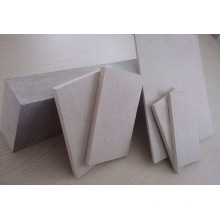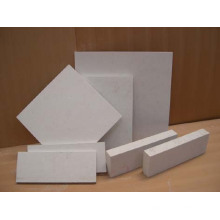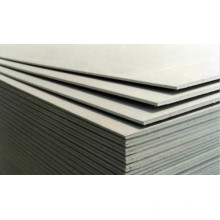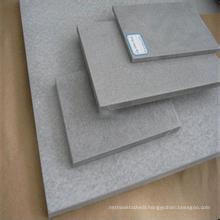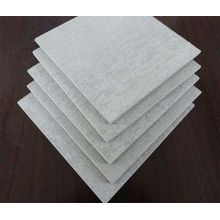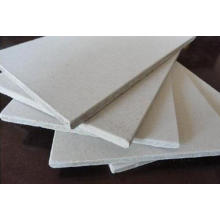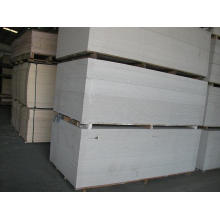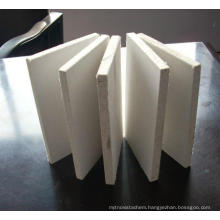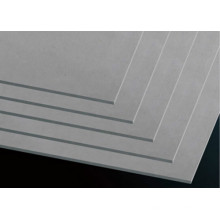1 Introduction
Polyurethane is known for its excellent low-temperature flexibility, high elongation at break, high peel strength and wear resistance, and adaptability to various substrates. It develops rapidly, with an average annual growth rate of about 3% or more. . According to the data released by London IAL Consulting, in 2000 the global production of polyurethane adhesives exceeded 525,000 t [1].
2. Development trend
Under the driving force of environmental protection, health and safety, polyurethane adhesives, like other adhesives, are developing in the direction of environmentally friendly high performance such as solvent-free, water-based and reactive hot-melt, to gradually replace the high-grade and poisonous categories of VOCs. However, due to some properties of solvent-based polyurethane adhesives are better than other categories, it is still used in some areas, such as in the footwear industry, solvent-based polyurethane adhesives for leather and other shoe materials, high bonding strength, bonding The durability of the parts is strong; in the dry composite film process, the solvent-based polyurethane adhesive has good wettability with the film, so it has been widely used so far. Use more in developing countries. However, the solvent used must be low-toxic, low-pollution to the atmosphere, and equipped with a recovery device; the adhesive must contain a high solid mass fraction to reduce the escape of toxic solvents into the air. The curing agent of the two-component polyurethane adhesive is mostly polyisocyanate added, and its free isocyanate content is lower than 0.5%. From the point of view of the dosage form and application, the development status of certain polyurethane adhesives is emphasized.
3, water-based adhesive
Water-based polyurethane (APU) is a binary colloid formed by dispersing polyurethane fine particles in a continuous aqueous phase. It was first developed by P. Schlack in 1942. It was originally used as a leather finishing agent and became an important commodity. Europe is developing faster. However, due to the long-term performance has not been a breakthrough improvement, only limited to the application of leather finishing agents, fabric finishing agents and printing and dyeing auxiliaries. In recent years, the APU obtained by the new type of depolymerization system has strengthened the Coulomb force and hydrogen bonding in the molecular chain to improve the adhesive performance. It is worth celebrating that in recent years, water-dispersible high-functionality isocyanates have been developed, which are easily dispersed in water. When water is separated from the APU dispersion, the isocyanate can quickly and fully react with the active hydrogen in the polyurethane molecule, thereby greatly improving the water-based, temperature-resistant, and adhesive properties of the APU adhesive. Water-dispersible MDI adhesives can bond agricultural and sideline products such as wheat stalks and rice straws into a sturdy, temperature-resistant medium-density fiberboard, turning waste into treasure. Domestic Yantai Wanhua Polyurethane Co., Ltd. has also produced such products.
The availability of water-dispersible isocyanates can still be used as a curing agent for other waterborne polymers containing active hydrogen, thereby improving their performance and expanding the range of applications.
In 1975, Japan Koyo Sangyo used water-based vinyl resin (such as polyvinyl alcohol)-MDI as an adhesive to produce high-quality wood products that could partially replace the universal urea-formaldehyde resin, and developed a non-aldehyde environmentally friendly wood adhesive. Now, Japan's waterborne polymer-isocyanate adhesive has been listed separately in the annual production of adhesives. Its production in 1999 was 10,157t, 13669t in 2000 and 13,704t in 2001[2]. In Japan's economic downturn, its output is still rising. It is mainly used for construction, carpentry and cementing, and partly replaces the universal urea-formaldehyde adhesive. In recent years, Japan has transplanted this technology to Southeast Asian countries and made wood products in situ before returning to Japan. Northern Europe has also produced the rubber for furniture and other wood products and home renovations to prevent housing syndrome. The annual global consumption is about 3-40 thousand tons.
There are also domestic production units. For example, the performance of the waterborne polymer-isocyanate wood adhesive developed and produced by Nanjing Linhua Chemical has reached or even surpassed that of similar foreign products in some respects and won praise from foreign colleagues. In order to reduce the cost of polyurethane adhesives and improve the performance of other aqueous resins, APU is often compounded with emulsions such as polyacrylates, polyvinyl acetates, and polyethylene-vinyl acetates, and natural rubber latexes.
Cytec Industries of the United States reported [3] that, during the preparation of APU, the solvent was often used because of the too high viscosity of the prepolymer; if the APU was prepared using a specific cyanate ester monomer, no solvent was used. The monomer may be m-tetramethylxylylene diisocyanate (TMXDI), ie, the hydrogen atoms on the two methyl groups in the xylylene diisocyanate molecule are replaced by a methyl group, improving the resistance to ultraviolet light aging. And hydrolytic stability, weakening the hydrogen bonding effect, increase the elongation at break. In addition, the reaction of isocyanate is weakened by the influence of methyl shielding, and no side reaction occurs. Even when reacting with polyol at 120-130° C., there is no cross-linking reaction and it is easy to prepare APU. The absence of side reactions means that the polymer can be designed to control synthesis according to the molecular structure. The adhesive prepared from m-TMXDI has a lower activation temperature than other aliphatic isocyanates. Even without the use of external Crosslinking agents, the adhesive can be pulled away from the activation temperature and the heat resistance temperature.
APU's excellent features are increasingly recognized by people. Its application research and development work continues to make new progress. Apart from its application in the wood industry, it has also been applied in industries such as flexible packaging, automotive, coating, finishing and shoemaking. It is expected that there will be more prosperity in the near future. $Page break $
4, reactive hot melt adhesive
The reactive hot melt polyurethane adhesive (RHMA PU) was developed and developed by Bostik in 1984 under the trade name Supergrip 2000. In the early 1990s, it was largely marketed. It has the characteristics of solvent-free hot melt adhesive, high initial viscosity, rapid positioning and other characteristics of the assembly, and also has the water resistance, temperature resistance, creep resistance, moisture resistance and media resistance of the reactive adhesive. The sizing temperature (120°C) is lower than that of the universal hot-melt adhesive (150°C), which can be used for the bonding and compounding of some plastic parts. It is favored by the modern automated assembly industry and develops rapidly. With different countries and regions, annual growth rates in recent years range from 7% to 8% to 10% to 15%, with the United States developing the fastest.
RHMA PU is commonly used as a polyol feedstock because of its high crystallinity and low heat of crystallization. In recent years, in order to improve the wettability of the adhesive to the plastic surface, amorphous amorphous polyester polyols have also been developed as raw materials. Because RHMAPU is a kind of adhesive based on hybrid chemistry, with the help of raw material selection and formulation adjustment, the exposure time of the adhesive can be extended to more than 3 minutes, and the construction is easy. After 10 minutes, the bonding strength is expected to reach 6.89 MPa. The final shear strength can be as high as 17-27MPa and the elongation can reach 500%-700%. Adhesion strength varies from 2-10 MPa depending on the substrate.
In recent years, a lot of development work has been carried out in widening the RHMA PU application field, and applications have been made in bookbinding, automotive headlight glass/plastic bonding, shoemaking, wood products, and fabric composites. Bookbinding with RHMA PU not only provides fast binding, durability, but also facilitates paper recycling. Some companies, such as Loctite, have developed RHMA PUs that can bond polyolefins, which are difficult-to-bond materials, and have opened up new possibilities for the compounding of automotive interior parts. The key to hindering the large-scale use of RHMA PUs is its high sensitivity to moisture. Synthetic, storage, and use processes require strict isolation of moisture, requiring the use of special structural equipment, resulting in inconvenience. In addition, commercial products still need to increase the strength and activity of cured products, and their prices are also high. Most users especially take a wait-and-see attitude toward developing China. Now is gradually trying to solve, it is expected that such potential high-performance, multi-functional adhesive market will be gradually broadened.
5, silanized polyurethane and polyether
One of the reasons for the rapid development of polyurethane adhesives is the increasing demand for the two pillar industries of the automobile and construction industries. With the development of automobile production to the direction of lightening of structural materials, aluminum and plastic materials must be used instead of steel materials, and at the same time, the mechanical connection process needs to be replaced by bonding. The process can be carried out with a polyurethane adhesive because two materials with different expansion coefficients can be well bonded. In 1999, the structural and semi-structural polyurethane adhesives used in the automotive and transportation markets in Western Europe were approximately 23 thousand tons, the United States 22,000 tons, and Japan 16,000 tons. It is used to bond lightweight plastic materials such as SMC, FRP, ABS, PC, PU, polyacrylates and aluminum. It is worth mentioning that nearly 90% of the world's current production of automotive windshields uses direct glass technology, almost all of the United States, Europe and Japan. This process not only solves the safety problem, but also reduces the air flow resistance due to the aerodynamic principle of the structure, speeds up the vehicle speed, and saves energy. Each glass requires an average of 800g of polyurethane adhesive. The process has now been extended to the rear and side windows of cars. Because of its attractive performance/price, it is also expanding its application to trucks, large cars, train passenger cars and urban light rail cars. Its usage is growing rapidly.
With the rapid development of the modern construction industry, the amount of sealant used for dust prevention, waterproofing, and prevention of harmful gases is increasing. Especially, the construction of curtain wall structures has emerged, and there is a tendency to focus on the development of high-performance products. In 2000, the amount of polyurethane sealant and putty used in construction in the United States was 129,900 tons, which was higher than that of silicone (119,100 tons); the amount of polyurethane sealant used in Europe was 19,000 tons, which is less than that of organic silicon (63,000 tons)[4] Japan's 2001 polyurethane sealant 28129t is similar to organic silicon (28991t) [5].
In 1980, Kaneka developed an elastic sealant based on silane-terminated polyether, later called modified silicone, which added a premium category to the building elastic sealant family. Its low viscosity, can be filled with more fillers, reduce costs; good weather resistance, can be used in the outdoor long-term; low modulus, good elasticity, can withstand the high displacement of the expansion joints of skyscrapers (± 50% -100%). Others have many advantages such as wide adhesion, environmental friendliness, not easy contamination, good paintability, and stable storage [6]. It is obtained by hydrosilylation of low all unsaturation high molecular weight end allyl polyoxypropylene.
The use of end-organosilane polyurethane (SPUR) prepolymers in adhesive and sealant formulations has also been used for many years. The SPUR process not only provides non-isocyanate prepolymers with good durability and excellent adhesion properties, but also forms polymers that can be made into high or low modulus products depending on the intended use.
In general, silanized polyurethane prepolymers are prepared by reacting diisocyanates with high molecular weight polyols to prepare polyurethane prepolymer intermediates, using TDI or IPDI diisocyanate and Acclaim 8200 high molecular weight polyoxypropylene glycol as raw materials, NCO /OH is 1.3-1.5. Next, the polyurethane prepolymer was capped with N-ethyl-r-aminopropyl-trimethoxysilane. The use of secondary aminosilane as blocking agent is preferable, and it reacts quickly with isocyanate to reduce the probability of side reaction and make the viscosity of the prepolymer within the allowable range [7]. The silanized polyurethane prepolymer retains a urethane chain in the molecule, which imparts a higher cohesion and a lower low temperature viscosity to the sealant, but the UV stability is not as good as that of the above polyether type.
A calcium carbonate filler, a titanium dioxide thixotropic agent, a plasticizer, a UV stabilizer and a moisture scavenger, and a silane adhesion promoter and a moisture curing catalyst were respectively added to the above two kinds of modified silicones to prepare a sealant. Curing is achieved by reacting trimethoxysilane with moisture in the air to form a three-dimensional body by hydrolysis polymerization.
